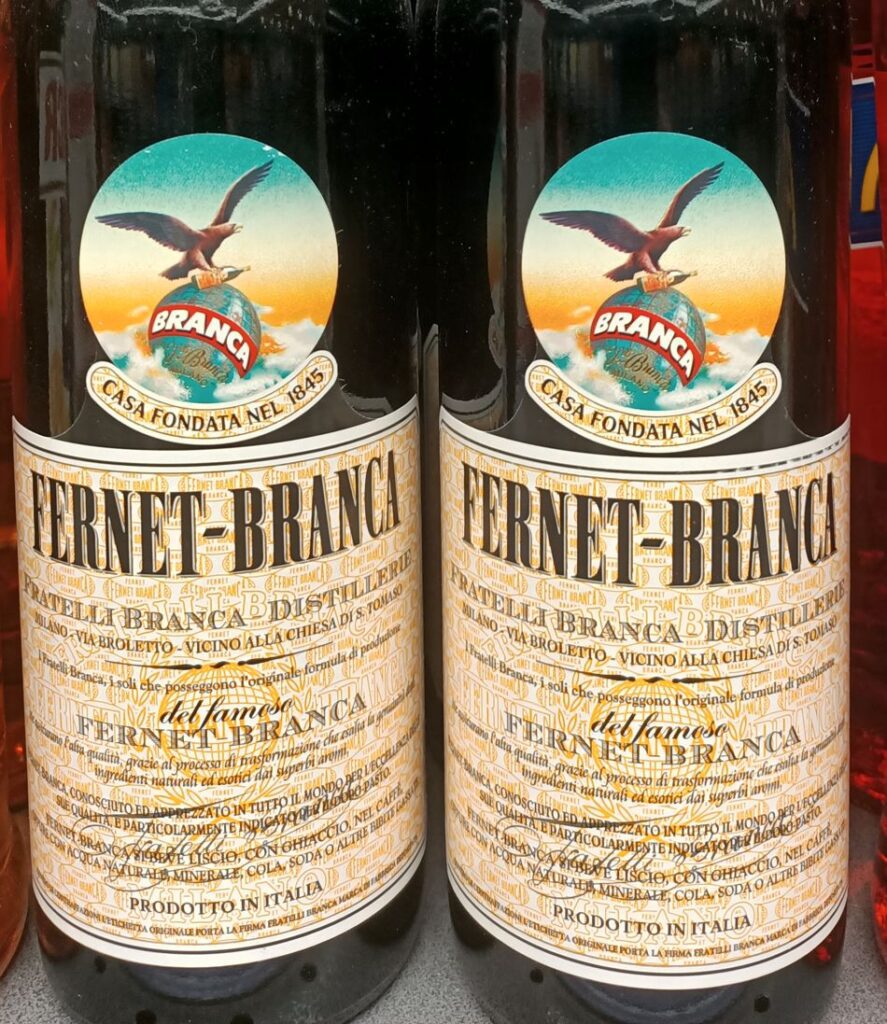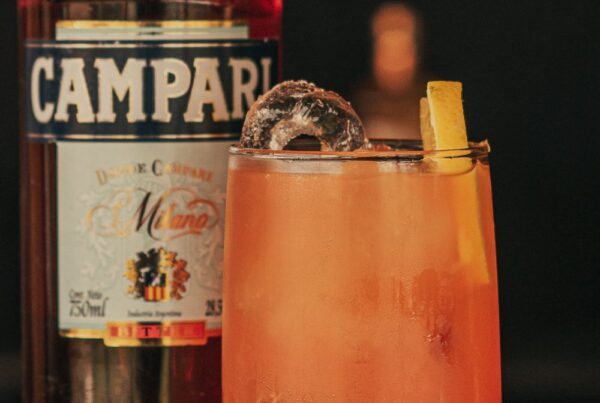Liqueurs have a long, rich history in Italy.
Like Italy itself, Italian liqueurs can be a difficult thing to navigate.
In this article, you will learn the difference between Campari and amaro.
Quick answer: Campari is an amaro. Amaro is the name given to Italian herbal liqueurs with bitter-sweet flavors.

Contents
What is Campari?
Campari is a vibrant, ruby-red Italian liqueur. As an Italian bittersweet herbal liqueur, it is considered an amaro.
It was created in 1860 by Gaspare Campari in Novara, Italy. This iconic beverage has since become a staple in classic cocktails and a beloved aperitif worldwide.
Campari has intense orange, herbal and floral aromas with a pleasant bitter aftertaste.
Campari’s recipe is a closely guarded secret, but it is thought to contain a blend of around 60 herbs, spices, fruits, and barks.
Key ingredients are believed to include bitter orange, cascarilla, ginseng, quinine, and a secret blend of aromatic herbs and roots. The exact proportions and specific components are not known.
As you can see from the image below, there is not much detail in the ingredients listed on the label of the bottle. The top three ingredients are water, sugar and alcohol with everything else simple listed as natural aromas/flavors and colorants.

What is amaro?
Amaro is a category or umbrella name for a type of herbal liqueur. It is a loosely defined term and there are dozens or possibly even hundreds of amaro with different ingredients and flavors.
Each region of Italy has its own unique amaro recipes, some dating back hundreds of years. Many started out as medicinal or health drinks.
Amaro were initially created centuries ago in monasteries across Italy as medicinal tonics. They were made for their digestive and healing properties. These early recipes gradually evolved, transitioning from monastic use to households and distilleries.
Families and local producers began crafting their own versions, each with its closely guarded recipe, which eventually led to the diverse array of amari we have today.
Over time, it became popular as a post-meal digestif, enjoyed for its flavorful and digestive properties.
Amaro is the Italian word for bitter and amaro are characterised by their bitter flavor profile.
Amaro liqueurs are made by infusing a base wine or spirit with botanical ingredients, such as herbs, spices, floral and citrus peel.
Some amaro are more well known, such as Campari and Cynar.

Types of Amaro
There’s a wide range of amaro varieties, each with its distinct character:
Aperitivo-style Amaro: Lighter in bitterness and often enjoyed before meals. Aperol and Campari fall into this category, known for their vibrant colors and more approachable bitterness.
Traditional Amaro: Classics like Amaro Montenegro strike a balance between herbs, spices, and sweetness, appealing to a broader range of palates.
Fernet: This intense, bitter amaro is recognizable for its strong flavors and is commonly used in cocktails.
Regional Amari: Different Italian regions produce their unique amari, showcasing local ingredients and flavor preferences. Examples include Amaro Lucano or Averna.

Key differences between Amaro and Campari
Category vs specific type
Amaro: Amaro is a broad category of Italian herbal liqueurs known for their bitterness, but the bitterness level can vary widely among different types. Some amari can be intensely bitter, while others are milder.
Campari: Campari is a specific type of amaro that’s known for its pronounced and unmistakable bitterness. It has a more consistent and distinct bitter taste compared to many other amari.
Color and Appearance
Amaro: Amari can vary widely in color, ranging from deep brown to amber or even greenish hues. The appearance depends on the ingredients used in each specific amaro.
Campari: Campari is known for its vibrant red color, which is one of its distinguishing features. Its intense hue comes from artificial coloring and natural ingredients.

Ingredients and Flavors
Amaro: Amari are made using a variety of herbs, roots, spices, and citrus peels, resulting in a wide range of flavor profiles. Different amari can have varying levels of sweetness and a diverse mix of herbal notes.
Campari: Campari has a proprietary recipe consisting of herbs, spices, and fruit peels, giving it a unique and consistent flavor profile. It’s characterized by its bright red color and a bitter yet fruity taste with prominent notes of orange and herbs.
How Campari and amaro are used
Amaro: Amaro is often consumed as a digestif, either neat or on the rocks, due to its supposed digestive properties. It’s also a popular ingredient in cocktails, adding depth and complexity to mixed drinks.
Campari: Campari is frequently used as an apéritif, served before a meal to stimulate the appetite. It’s a key component in classic cocktails like the Negroni and the Americano, contributing its distinct bitter-sweet flavor to these drinks.
Amaro vs herbal liqueurs
Amaro is a subset of herbal liqueurs known for their distinct bitterness, often consumed for digestive purposes.
Herbal liqueurs encompass a broader range of flavors and uses beyond bitterness, such as floral or spicy notes.
Read with confidence: I am WSET L2 Award in Spirits & Diagio Bar Academy certified.




